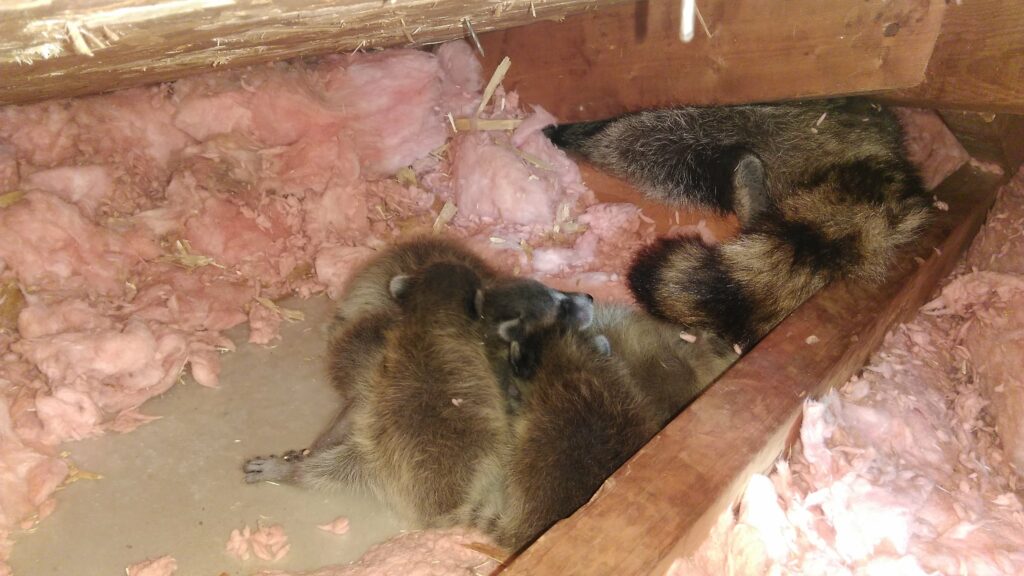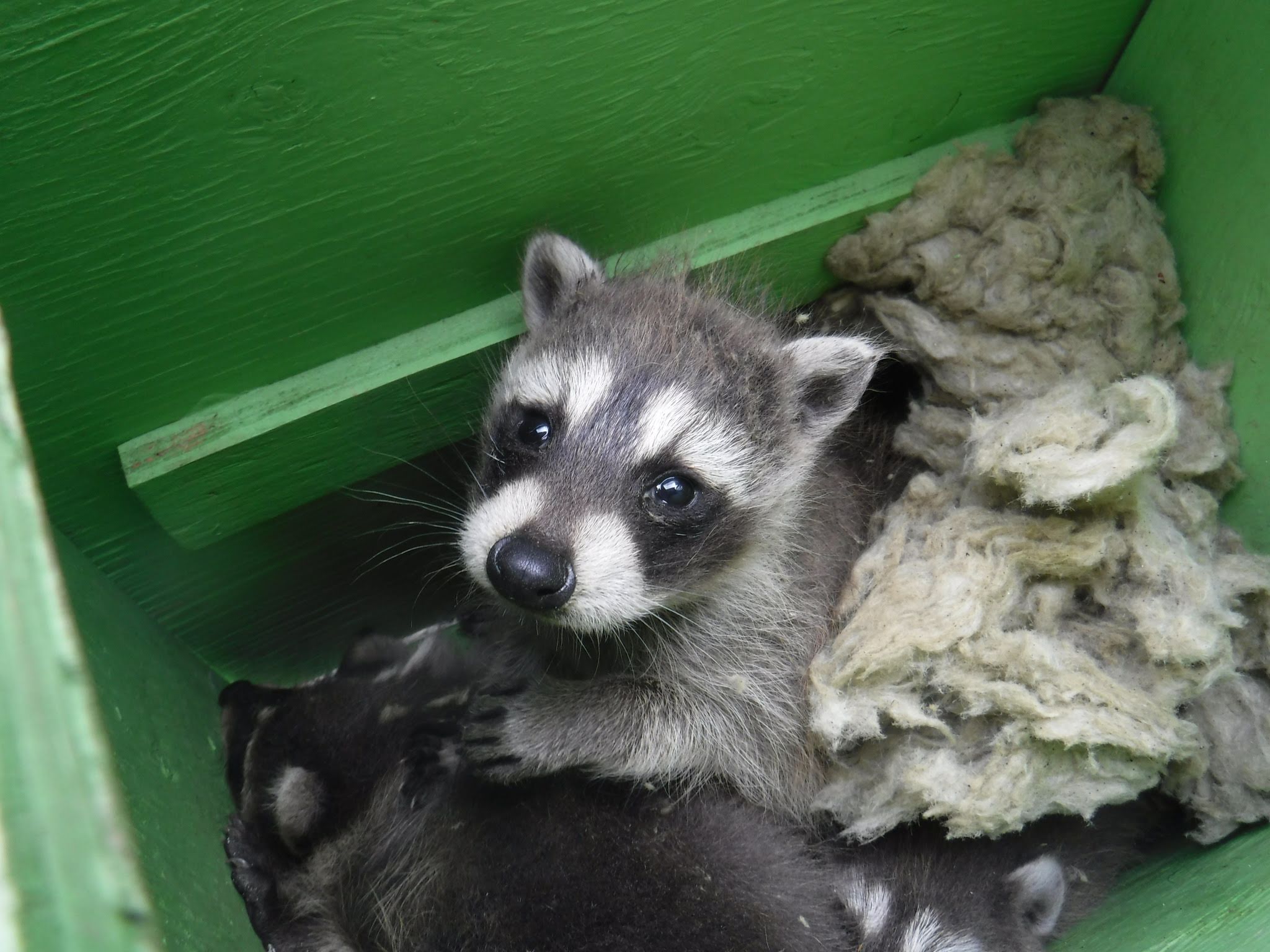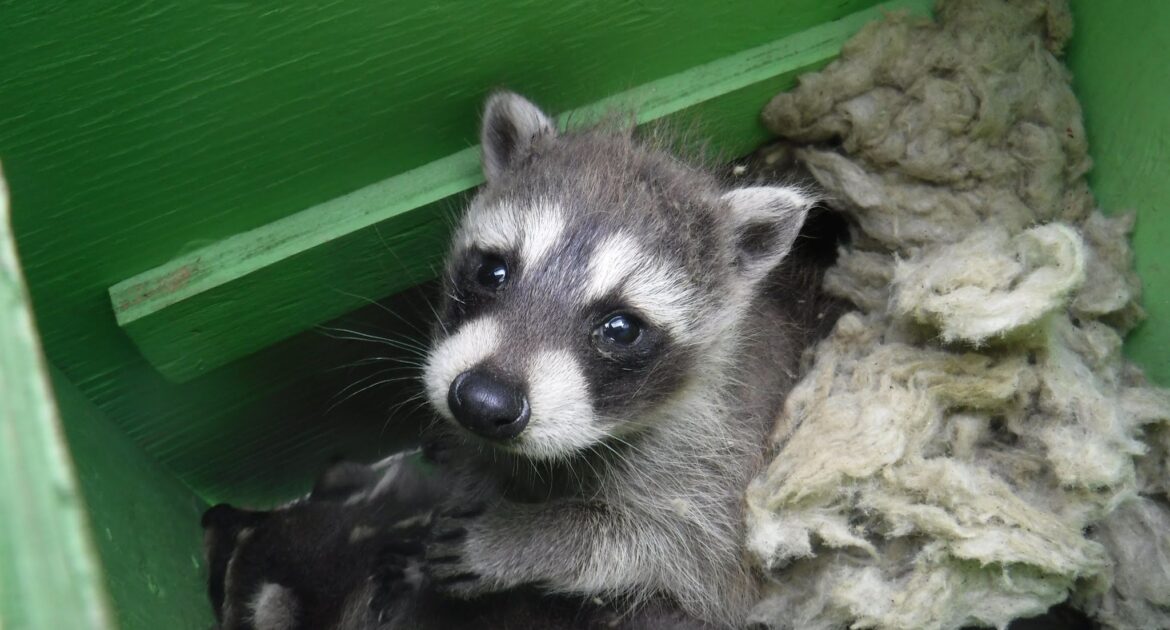If asked, “What sound does a raccoon make?” many people might struggle to come up with an answer. The reason is not that raccoons are silent but because raccoon sounds in Newmarket are so varied. Raccoons rival monkeys in their intelligence and are able to make over 200 distinct noises to communicate with one another. However, there are some sounds that are more common than others. Here are some of the most common sounds that raccoons make and what they mean.
1. Screeching or Screaming
Raccoons are moderately sized mammals and there are a number of predators that can feed on them, including coyotes, hawks, mountain lions, owls, bears, wolves, and foxes. Upon first sighting a predator, a raccoon may remain silent and watchful. However, if the threat remains in the area or starts getting too close, raccoons may start screaming or screeching in an attempt to scare the predator away.
It is not only predators that pose a potential threat. Sometimes male raccoons can behave overly aggressively to females and their kits. The scream of a female raccoon serves as a warning to the male to stay away, as well as a signal to her kits that they should remain in their den for protection.
A raccoon may also screech in response to stress, but more often, it is a warning to animals that may pose a threat while communicating the danger to others.
2. Chittering
Except during times of imminent danger, mother raccoons and their kits typically communicate with each other using a soft chittering or twittering sound. The sound of the mother raccoon is sometimes described as almost like a purr. The mother raccoon uses this sound to calm the kits and let them know where she is. This is important during the first couple of weeks of the kits’ life as their eyes are not yet open and they cannot identify their mother by sight. When the babies are old enough to venture outside with their mother, she uses the sound to guide them to safety and prevent them from wandering off.
The kits make a sort of whirring, chirring sound in response to their mother’s chittering to communicate their comfort and satisfaction. They make these sounds frequently during their early lives. As the kits mature and start to become more independent, they gradually start making the sound less frequently as they prepare to move out on their own.
The chittering sound is normally used exclusively by mother raccoons and their kits. Adult males are capable of making the sound too, but since they are not involved in raising the babies, they do not have much occasion to do so. Mother raccoons and their kits can recognize one other by the sounds of their voices.

3. Barking or Growling
When raccoons communicate with other adults and aren’t in immediate danger, they are most likely to use barking or growling noises similar to sounds that a dog might make. It is usually a sign of either high stress or high excitement. Raccoons may bark or growl in stressful situations, such as getting into a fight with another raccoon or losing their bearings. A mother raccoon may growl when she loses sight of one of her kits.
However, raccoons also bark or growl to communicate a state of excitement. They use these sounds to communicate that they have found a good source of food, and after they have finished eating, they may make growling sounds to express satisfaction and contentment.
If You Hear Raccoon Sounds In Newmarket
Raccoons are nocturnal, so if you hear them on your property, it is most likely to be at night. You may be more likely to hear thumps as they move around in your attic or knock over your garbage can rather than their vocalizations. In either case, they can cause significant property damage. Find out more about raccoon removal and other services from Skedaddle Humane Wildlife Control.




